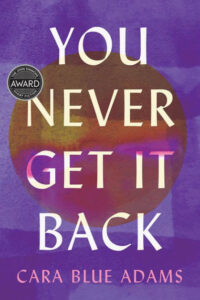
Cara Blue Adams on How to Build a Short Story Collection
What Does a Collection Offer that a Single Story Cannot?
The following first appeared in Lit Hub’s Craft of Writing newsletter—sign up here.
I wrote stories for over a decade before I began to think that I might have enough material for a collection, and when I sat down with those stories with the vague idea that the ones I chose for a book should share a theme, I was startled to find that although I’d been reading story collections for many years, I didn’t know what made for a successful one.
My deep investigations into what made for a great short story, begun as a writer and continued on the editorial staff of The Southern Review — time during which I read literally thousands of stories — had yielded insight as to how a story worked. Reading collections, though, I’d thought much more about the individual stories than the effect of the whole, which made sense, since I was writing and publishing my own individual stories and publishing those by others.
A single excellent story, I found as I reflected, was enough for me to feel a collection was a success; read Charles D’Ambrosio’s “The Point” or Nam Le’s “Love and Honor and Pity and Pride and Compassion and Sacrifice” or Danielle Evans’s “Virgins” or Amy Hempel’s “In a Tub” and tell me that each isn’t worth the price of the whole collection! But not everyone felt that way, and I could see why.
What came next won’t surprise anyone who knows me well; my partner likes to joke that my personal motto is “Why do it when you can overdo it?” and it’s true that I like to fixate on a question and live inside it for years. This was no different: I spent years applying myself to the question of what pleasures a collection might offer that a single story cannot, designing, finally, an entire graduate course around this question.
The course’s starting point was an excellent essay by Peter Ho Davies called “Only Collect,” one of very few written considerations that I could find of this urgent — to me, at least, and, I suspect, to others crazy enough to fall in love with the story form! — question. Davies discusses the many types of collections a story writer might assemble, including the “all the best stories I have” collection, the themed collection, and the linked collection — and here, he provides a helpful taxonomy; stories are often linked by geography, identity, shared event, or recurring characters.
Reading “Only Collect” and returning to my own favorite collections, a number of which were called novels by their publishers, I began to think that perhaps there was a benefit, too, to thinking of fiction as existing on a spectrum, from most discontinuous to most continuous.
The course that resulted is called “Building a Bridge: The Linked Collection.” We begin with collections that aren’t explicitly linked and ask ourselves what throughlines hold each book together: for example, we read Laura van den Berg’s The Isle of Youth and think about the wide variety of settings (Paris, Antarctica), elements of mystery (detectives, disappearances), and the theme of estrangement, as well as van den Berg’s inimitable voice. Next, we consider collections explicitly linked by elements like geography and identity and character, reading, for example, Jhumpa Lahiri’s Interpreter of Maladies and Elizabeth Strout’s Olive Kitteridge or Denis Johnson’s Jesus’ Son. Finally, we read novels that can be understood, too, as collections, like Joan Silber’s Improvement and Justin Torres’ We the Animals. We consider the challenges and rewards of each structure, and along the way, I encourage my students to ask themselves what it is that they collect. They imagine their own complete book projects, writing, in one exercise, the first line of each story or chapter, and they imagine what sort of structure would best suit their aims.
I hope to give them the tools to do what I did when I ultimately decided to link my debut collection through one central character, a young woman from New England named Kate Bishop: to see what it was that keeps drawing them back — and more, how to do what I can only hope I have achieved, to make of those things their own beautiful and striking constellation.
__________________________________

You Never Get It Back by Cara Blue Adams is available via University of Iowa Press.
Cara Blue Adams
Cara Blue Adams is the author of You Never Get It Back, winner of the John Simmons Short Fiction Award (University of Iowa Press, 2021), judged by Brandon Taylor, who calls it “a modern classic.” Her stories appear in many magazines, including Granta, The Kenyon Review, and American Short Fiction. She has been awarded the Kenyon Review Short Fiction Prize, the Missouri Review Peden Prize, the Meringoff Prize in Fiction, and a Pushcart Prize Special Mention, along with a Center for Fiction Emerging Writers Fellowship and support from the Bread Loaf Writers’ Conference, the Sewanee Writers’ Conference, and the Virginia Center for the Creative Arts. She is an associate professor of creative writing at Seton Hall University and lives in Brooklyn.



















